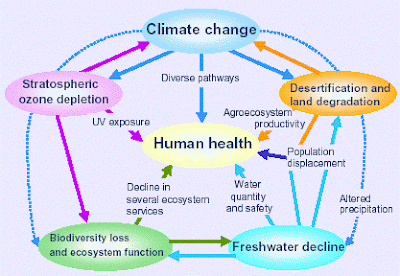by Titus Ngeno, Josh
Rivenbark
As countries transition from millennium development goals
(MDGs), and focus on implementation strategies for sustainable development
goals (SDGs), healthcare remains a primary concern in bridging the gap between
developed and developing countries. It is represented in Goal 3: “Ensure healthy
lives and promote well-being for all ages.” Under this goal, one of the
overarching targets is attainment of universal health coverage (UHC).
The concept of UHC is not new and has been growing over the
course of the past two decades. In 2005,
the World Health Organization (WHO) member states committed to develop their
health financing systems to ensure access to services for all people. The
countries also committed to ensuring that the people do not suffer financial
hardship in paying for health services. This is the spirit espoused in
universal health coverage and is envisioned to reduce the gap in health care
between rich and poor countries.
Unfortunately, there is no “one shoe fits all” solution to
establishment of universal health coverage. The concept represents a
convergence of perspectives on what attainment of health is. In addition, implementation
of universal health is undertaken under disparate governance structures. The
resources with which to develop universal coverage, as well as pre-existing
levels of coverage, also vary greatly from country to country. The 2010 WHO report
on health systems financing highlighted three main barriers to achievement of
universal health care: availability of resources; overreliance on direct
payment at the time of need; and thirdly, inefficient and inequitable use of
resources. The report noted that there are also several other factors
influencing health, which lie outside the primary realm of the health sector
and administrative dockets. These areas, such as education, housing, food,
security and economic growth, are inter-linked with health outcomes and
influence attainment of universal health.
Furthermore, as countries work to achieve UHC, it is not yet
clear how progress will be tracked. Measurement is a critical factor in goal
setting, and the goal of UHC presents unique challenges to measurement.
According to the WHO,
UHC is “ensuring that all people can use the promotive, preventive,
curative, rehabilitative and palliative health services they need, of
sufficient quality to be effective, while also ensuring that the use of these
services does not expose the user to financial hardship.” As was alluded to in
class, there are a LOT of aspects of this definition that would need
clarifying. For example, what exact services are included? Is it the same
package in every country, or should it account for the resources of a given
country? And how is financial hardship defined? Clarification (and arguments
about definitions) will likely be needed before a specific measure is adopted.
Nevertheless, UHC is not just a utopian fantasy. Bridging
the healthcare gap between developed and developing countries is achievable,
albeit slowly. Countries such as Chile, China, Costa Rica and Cuba have demonstrated
that this is feasible in a 21 year period by scaling up health sector
interventions as reported by the lancet
commission on investment in health. Increasing capacity for universal
health coverage has also led to improved health outcomes such as infant and
under-five mortality in Tanzania.
In Estonia,
life expectancy has increased by about 10 years. In India,
where the concept of UHC dates as far back as 1946, good access to preventive and
curative health services has been achieved even though financial coverage is
still lacking for most services (as surveyed by Devadasan et al).
Going forward, in order to attain universal health coverage,
development of health insurance and health provision industries should occur in
tandem with strong backing from policy makers and stake holders (Jane Doherty et al). The
global call to focus on the SDGs is an opportunity to echo the 1990 MDG call,
and to rally governance sectors and the wider society to embark on attainment of
universal health coverage in order to ensure healthy lives and promote
well-being for all ages.







